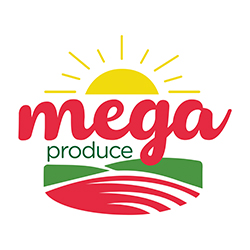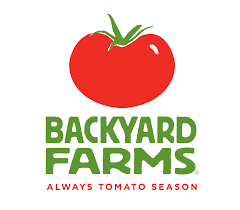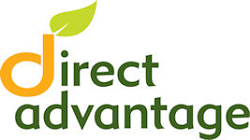Consumers know it’s important to eat a rainbow of fresh fruits and vegetables, however, they often fall short of meeting this important nutrition goal, especially when it comes to anthocyanins — the purple pigment that’s in blueberries, blackberries, red grape skins, eggplant and purple potatoes.
But what if the industry made it easier for consumers to get these crucial antioxidants in their diets by offering new and flavorful ways to consume them?
Enter Nathan Pumplin, CEO of Norfolk Healthy Produce, the company behind the Empress Purple Tomato, a bioengineered or genetically modified organism tomato “packed with antioxidants.”
“They’re really good for people’s health, and most of us don’t eat nearly enough anthocyanins,” Pumplin says.
The trained molecular biologist with a doctorate in plant biology has worked for nearly 20 years in research and development and the intersection of R&D and commercialization of new types of plants that solve problems.
What are the advantages of a problem-solving plant? Pumplin says they can offer a host of benefits from being grown using less fertilizer and less pesticides to being naturally resistant to diseases and other added sustainability benefits.
As CEO of the Davis, Calif.-based company, Pumplin is focused on developing better purple tomatoes and engaging with the supply chain — right down to the consumer — to introduce them to a tomato that he says not only has nutritional benefits and tastes great, but shelf-life advantages as well.
Origin of GMOs’ Image Problem
But bringing a GMO purple tomato to market has not been without challenges.
The Packer’s Sustainability Insights 2025 report, set to drop Sept. 22, asked some 500 consumers across the country if they actively avoided GMOs. Those who indicated they did were asked why. The leading response was “chemicals.” Another survey respondent replied: “Frankenfoods are not what God intended us to consume.”
What sparked these misconceptions and negative sentiment around GMOs?
“To me, it’s very, very clear. And here’s kind of my simple understanding: When there’s any new technology that comes out — say, the first smartphones — there’s a very small set of people who start to use those new products and those are the innovators — the early adopters.”
Then there’s the middle of the curve who wait and see, and those who will resist adoption altogether, he says.
“When the first GMOs were launched, they were really marketed to farmers, and the innovative farmers said, ‘OK, there’s these new GMO crops, do I want to use them?’ And they very quickly saw, ‘Wow, this solves a lot of problems for me. Yes, I want to adopt them.’ And then sort of the middle of the [curve] farmers also very quickly adopted,” says Pumplin.
The first customers of GMOs were farmers and, in several years, the majority of the country’s corn and soy acreage was GMO, he says.
“What was forgotten was that it was food being produced and sold to consumers, and consumers never had an opportunity to engage with GMOs in the food system,” says Pumplin.
GMOs became widespread in the food system for years, and while some were comfortable with it, others felt betrayed, he says.
“There were people who felt the food supply was playing God in the lab by adding DNA to create new varieties and no one had asked them if they wanted to opt in or opt out,” says Pumplin. “I think a lot of people felt like they were treated like guinea pigs. Their opinions and their values weren’t respected when those first crops launched. And that’s a huge problem.
“One of the things I’m trying to do with our company is engage in a dialog with consumers about why we think this is a better tomato,” he continues. “We made it with biotechnology, but it’s not better because it’s biotechnology.”
Breakthroughs on the Brink
As consumers are hungry for the new, the flavorful and the nutritious, the fresh produce industry has innovated with the help of GMOs in some exciting ways.
GMOs have allowed for some “breakthrough products,” says Pumplin, pointing to Norfolk’s Empress Purple Tomato that is in grocery stores now and “doing extremely well.” Other examples include Fresh Del Monte’s Pinkglow Pineapple and the Arctic Apple.
“We have a lot of crops that people don’t know are GMOs — like all the papayas that come from Hawaii and a lot of the sweet corn on the market. A lot of these have been improved with biotechnology, and I think we’re on the brink of widespread recognition within the industry that this is something that consumers are no longer afraid of,” he says. “They simply want a better product. They want something they can afford. They want something that their kids will eat. They want something that’s nutritious, that’s beautiful, that tastes good — all of that.”
Several years ago, Norfolk conducted a nationwide consumer study asking if presented with the purple tomato product concept, would they be interested in trying it?
“Eighty percent of them were interested to extremely interested in trying the product,” says Pumplin. “And there were only 10% of consumers who said, ‘Nope, I don’t want to at all. I’m not there yet with GMOs.’”
But retailers who have been at the forefront of the GMO conversation with consumers for years may have lingering doubts.
“They say, ‘Well, you know, I get 10 questions a year asking if a product is GMO and it makes me nervous.’ And yet, what they don’t hear is the millions of people who say, ‘We want something better and we’re not afraid of biotechnology,” says Pumplin. “There’s sort of this silent majority.
“There’s just simply so little fear among the broad consumer base right now, and also such a desire for new and better products,” he continues. “And a big part of my job is to try to make sure that folks in the produce industry — these key decision-makers — understand where their consumers are, because I think that’s actually the biggest gap right now. Consumers have moved on, and a lot of the decision-makers in the industry haven’t caught up to where the consumers are.”
Education is Key
While Pumplin sees consumers becoming increasingly open to trying and embracing the purple tomato, education is critical to continuing to move the needle.
“We know that most consumers don’t actually know what a GMO is,” Pumplin says. When consumers go to their local grocery store, they’re looking on the packaging for shortcuts to identify products that are aligned with their values and how they want to feed their families. He says labels like “non-GMO,” “pesticide free” and “organic” become cues for the consumer to determine what’s good, what’s bad and what they can trust.
“If you ask consumers what they think is good, they’re taking cues from the packaging and marketers, who are taking cues from other marketers, and so we have this interesting kind of reinforcement system of what’s good and what’s bad, but it’s not actually connected to the food science,” Pumplin says. “It’s not connected to the supply chain. It’s not connected to a lot of what’s good for us.”
When Pumplin has the opportunity to engage with consumers and answer their questions about the purple tomato, that can be an eye-opening moment for many shoppers.
“What’s really gratifying is that we find, generally, 80% to 90% of people in the U.S. want this product,” Pumplin says. “They know it’s a GMO, and they get a chance to ask questions like, ‘Well, don’t all GMOs have pesticides?’ And we can say, ‘No, there’s no pesticides on these. They say, ‘Well, GMOs are sprayed with Roundup, right?’ We say, ‘This has nothing to do with Roundup.’ And they have the opportunity to ask a lot of questions, and then the vast majority of people say, ‘OK, I really want this’”
The Empress Purple Tomato, which has been reviewed by the Food and Drug Administration and USDA and fully has the green light to sell the product in the U.S., indicates bioengineered on the label, and there’s a QR code that goes to the Norfolk website that shares the science behind the tomato, says Pumplin, who adds that the Empress Purple Tomato will soon be available in Canada as well.
GMOs and the Future of Food
What role does Pumplin see GMOs playing in the future of fresh produce and the broader food system?
“I want to make sure it’s clear that GMO is not a silver bullet. It’s not going to solve all the problems out there,” he says.
But Pumplin does see GMOs as a complement to the traditional plant breeding that’s been conducted for thousands of years and continues to innovate, as in the case of easy peel mandarins, he says.
“What we need to do is continue excellent plant breeding for certain cases. And if we can sprinkle on biotechnology that can help us get more nutrients and disease resistance [against something like] the brown rugose virus, which is a major upheaval in tomatoes, and if we were allowed to use biotechnology, we could combat it much more efficiently, much quicker, much more sustainably and in a way that we know is safe,” he says. “These are the kind of use cases that if we can change public opinion and key decision-makers’ opinions about these technologies, that’s going to be to the benefit of everyone.”
















